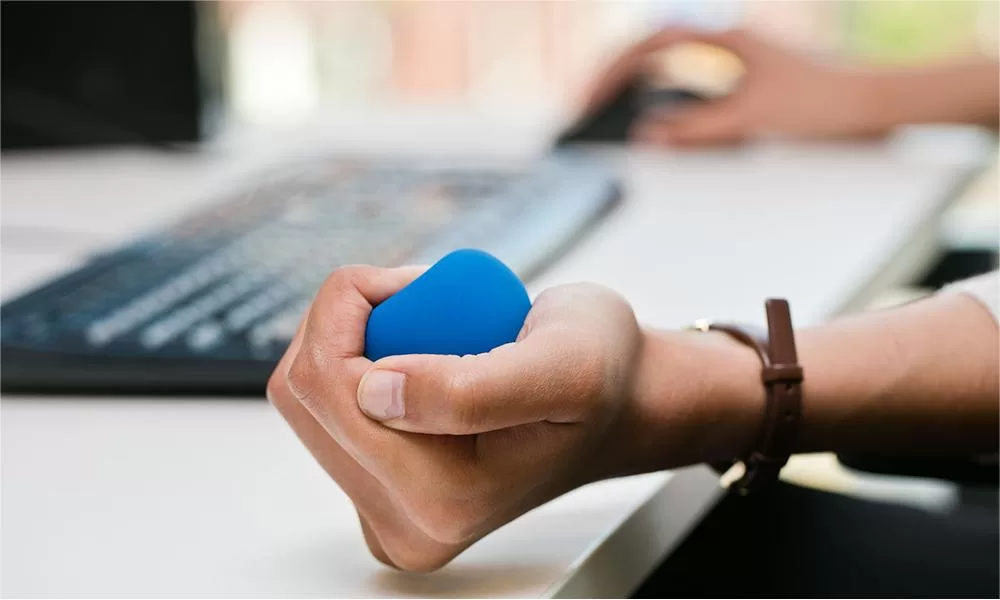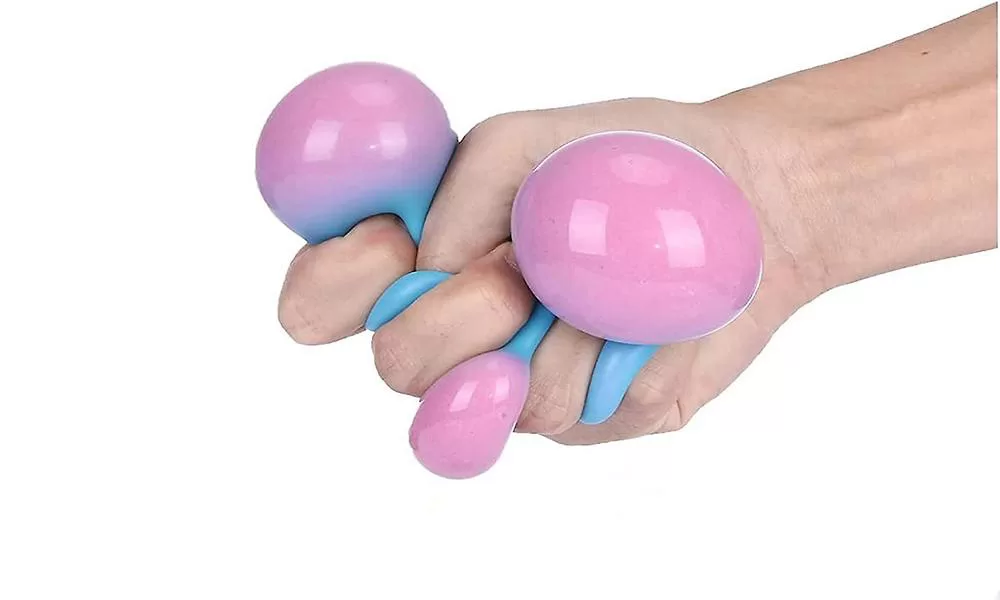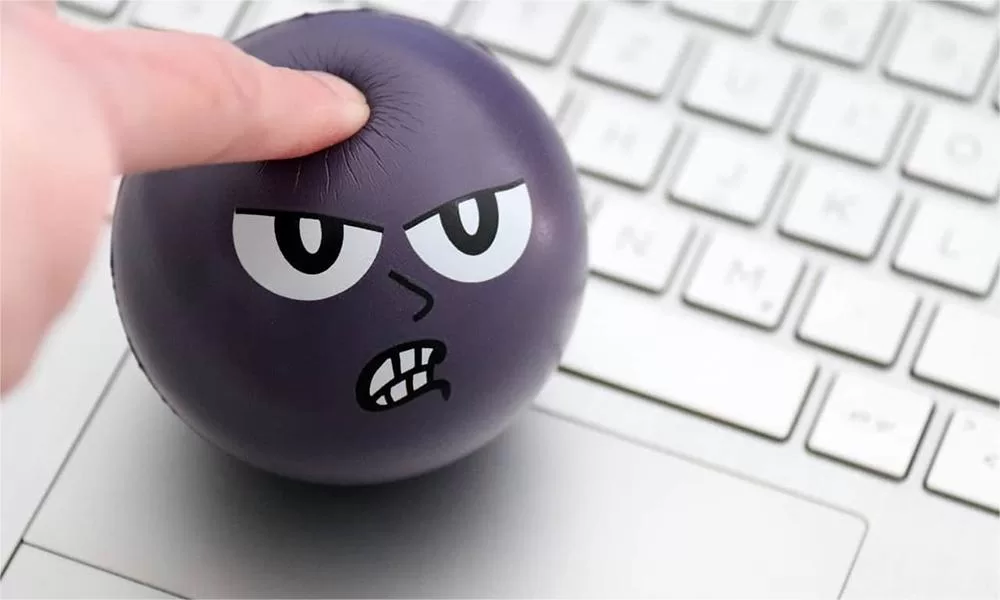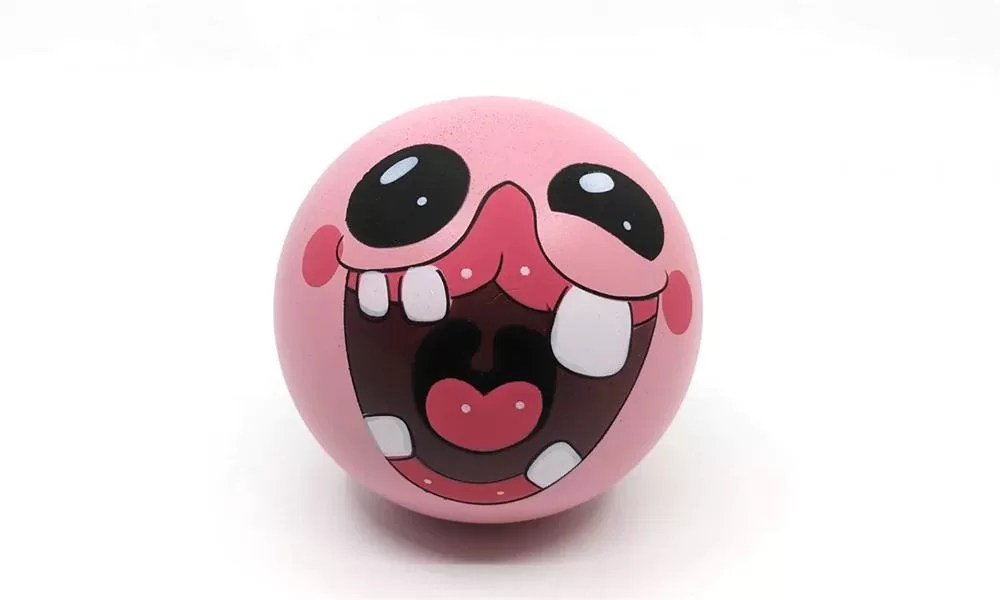Introdução
Bolas de estresse, aqueles pequenos objetos mole encontrados em muitas mesas em todo o mundo, têm uma história intrigante. A onipresença deles levanta a pergunta: o que levou a invenção deles?

A principal razão para bolas de estresse’ Invenção
A razão mais fundamental é: Aliviar o estresse e a tensão.
As bolas de estresse foram inventadas principalmente para atender a uma necessidade humana atemporal: alívio do estresse. Como ferramentas de terapia, eles pretendiam aliviar a tensão e melhorar a funcionalidade das mãos. Ao longo dos anos, seu objetivo se expandiu. Eles se tornaram itens promocionais, brinquedos infantis e até colecionáveis peculiares.
História das bolas de estresse
Muito antes da moderna bola de estresse, as civilizações chinesas antigas utilizavam bolas macias cheias de ervas ou arroz. Essas não eram apenas ferramentas para alívio físico, mas acreditavam-se ter propriedades espirituais e terapêuticas, estimulando várias partes da mão para promover o bem-estar geral.
O século XX viu o nascimento da bola de estresse como a conhecemos. Feito de materiais maleáveis, essas ferramentas foram projetadas para espremer, fornecendo feedback tátil imediato e alívio da tensão.
A ciência por trás das bolas de estresse
Quando confrontado com o estresse, a resposta de luta ou fuga do corpo entra em ação, levando à tensão muscular. Essa manifestação física do estresse pode ser aliviada através da estimulação tátil.
Espreitar uma bola de estresse desvia nossa atenção, estimula os nervos da mão e aumenta a circulação sanguínea. Esse ato simples pode desencadear a liberação de endorfina, os elevadores de humor naturais do nosso corpo, promovendo o relaxamento.
Diferentes tipos de bolas de estresse
De bolas antigas cheias de arroz a espuma e variantes modernas cheias de gel, as bolas de estresse evoluíram em sua composição. Cada material oferece um nível distinto de sensação e resistência, atendendo às preferências individuais.
O mercado de hoje é inundado com bolas de estresse de várias formas, tamanhos e texturas. De aqueles com citações motivacionais até as semelhantes a frutas ou animais, há uma bola de estresse para toda personalidade e propósito. Aqui estão 5 tipos comuns de bolas de estresse:
- Bolas de tensão de espuma: estes são o tipo mais comum de bolas de estresse. Feito de espuma densa, eles são leves e perfeitos para espremer. Eles recuperam sua forma rapidamente após serem comprimidos.
- Bolas de estresse cheio de gel: essas bolas de estresse são preenchidas com um gel espremável e geralmente são envoltas em borracha elástica ou pele de pano. Eles oferecem uma experiência tátil diferente em comparação com as bolas de estresse de espuma, pois podem ser mais mole e moldáveis.
- Bolas de estresse cheio de contas: contêm miçangas pequenas ou pellets. Quando espremidos, as contas se movem, fornecendo uma sensação única. Alguns até emitem um som suave de trituração quando pressionados.
- Bolas de tensão cheias de líquido: elas são preenchidas com um líquido e geralmente têm itens flutuando por dentro, como glitter ou pequenas figuras de borracha. Eles podem ser mais delicados do que outros tipos, mas oferecem uma experiência visualmente agradável quando espremidos.
- Bolas de tensão de poliuretano (PU): as bolas de estresse PU são frequentemente usadas para fins promocionais, porque podem ser facilmente moldados em formas personalizadas e impressos com logotipos ou mensagens. Eles são leves, duráveis e proporcionam uma sensação consistente quando espremidos.
- Bolas de estresse eletrônico: uma abordagem moderna da bola de estresse tradicional, elas são equipadas com sensores que podem medir a força da sua aderência. Eles podem ser combinados com um aplicativo ou software que fornece feedback ou jogos com base em quão difícil e com que frequência você se espremia.

O papel das bolas de estresse nos tempos modernos
O século XXI, com seus rápidos avanços tecnológicos e ritmo implacável, viu um aumento nas doenças relacionadas ao estresse. Nesse cenário, as bolas de estresse emergiram como guerreiros silenciosos, combatendo a epidemia de estresse moderno.
Sua simplicidade e eficácia tornam as bolas de estresse uma opção preferida para muitos que buscam uma solução rápida de alívio do estresse, especialmente em ambientes de alta pressão, como escritórios.
Como usar uma bola de estresse efetivamente
Gire -o, pressione com intensidades variadas dos dedos ou jogue -o entre as mãos. Há mais em uma bola de estresse do que apenas apertar.
Para benefícios ideais, integre os exercícios de bola de estresse em intervalos curtos. Concentre -se no aperto rítmico e na respiração profunda para uma experiência meditativa.
Alternativas para bolas de estresse
De spinners de fidget a brinquedos sensoriais, o mercado oferece uma infinidade de alternativas. Cada ferramenta tem seus benefícios exclusivos, atendendo a diferentes necessidades de alívio do estresse.
Embora as bolas de estresse sejam portáteis e acessíveis, elas podem não ressoar com todos. É crucial explorar e encontrar a ferramenta que ressoa com suas necessidades de alívio do estresse.
perguntas frequentes
Quando a bola de estresse moderna ganhou popularidade?
- Durante o final do século XX, coincidindo com a ascensão da cultura corporativa.
As bolas de estresse têm validade terapêutica?
- Sim, eles ajudam na reabilitação manual e podem melhorar a força da aderência.
Com que frequência alguém deve usar uma bola de estresse?
- Use -o conforme necessário, mas certifique -se de não coar os músculos da mão.
As bolas de estresse são adequadas para crianças?
- Sim, mas certifique-se de que eles são apropriados para a idade e sempre supervisionam seu uso.
As bolas de estresse podem substituir a terapia profissional?
- Não, são ferramentas complementares e não devem substituir conselhos ou terapia médica profissional.

Conclusão
As bolas de estresse, com sua rica linhagem e benefícios inegáveis, são uma prova da busca duradoura da humanidade por tranquilidade em meio ao caos. Sua relevância contínua ressalta sua eficácia ao abordar um desafio humano universal: o estresse.

